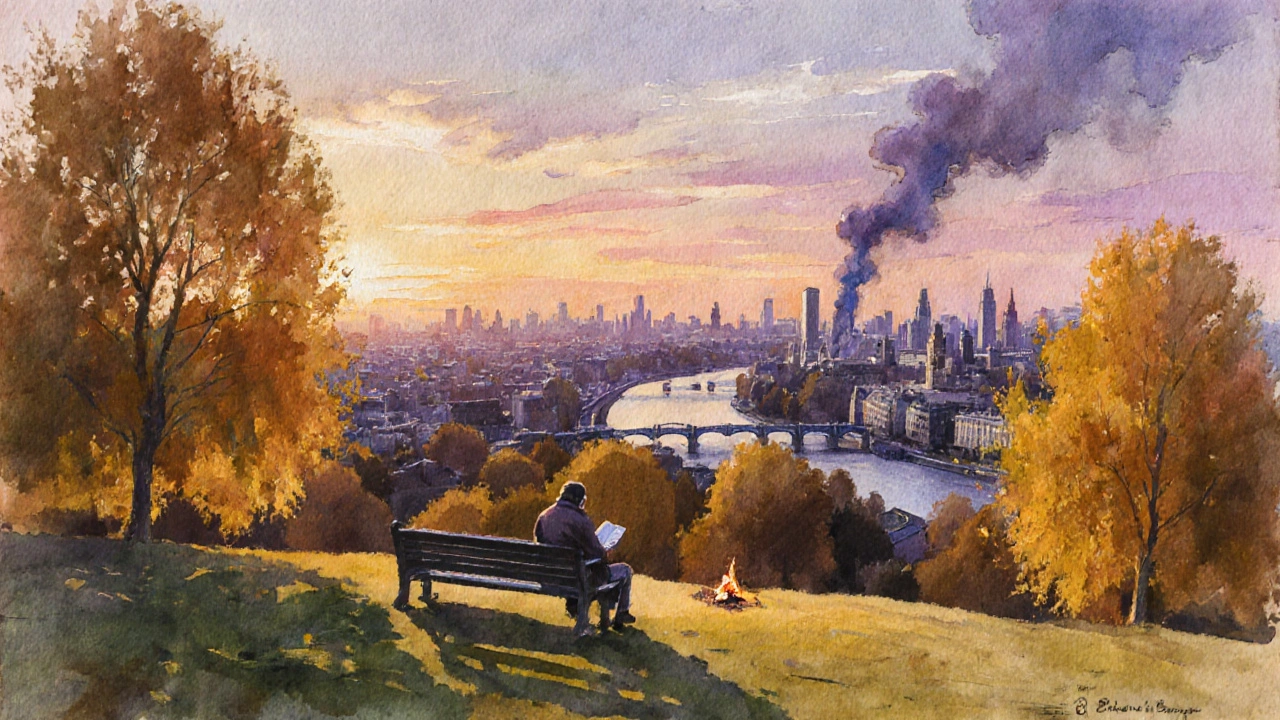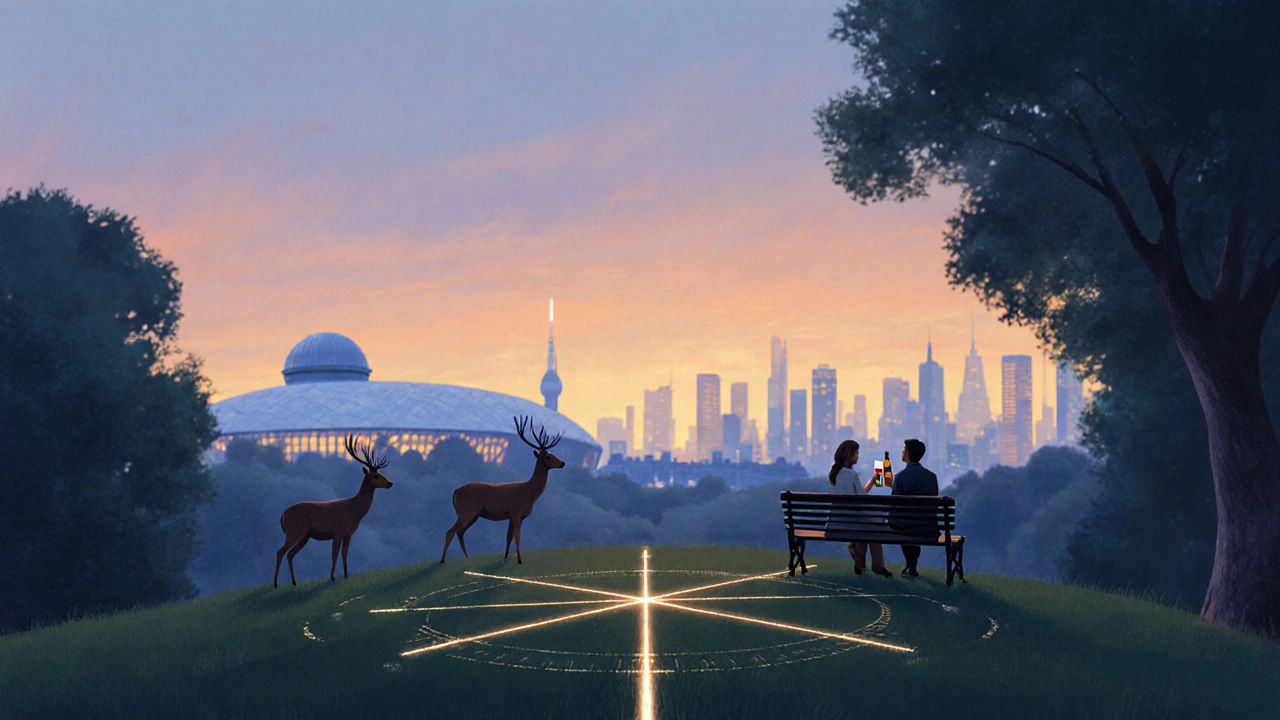
London’s concrete sprawl never sleeps. The Tube’s rumble, the honk of black cabs, the endless buzz of Oxford Street - it’s enough to make anyone crave silence. But if you know where to look, London parks offer real refuge. Not just patches of grass, but wild woodlands, hidden lakes, and centuries-old gardens where the only clock that matters is the one set by birdsong and shifting shadows.
Just 12 miles from Charing Cross, Richmond Park feels like another country. This 2,500-acre royal park is the largest in London, and its ancient oaks, open heath, and roaming red deer make it feel more like the Scottish Highlands than the capital. Walk the perimeter road at sunset, and you’ll see deer grazing just feet from the path - no fences, no crowds. Locals come here to run, sketch, or simply sit on the stone benches at Isabella Plantation, where rhododendrons bloom in May like fireworks in the mist. No cars allowed on the main trails. No ticket needed. Just bring a thermos of tea and your sense of stillness.
Most tourists head to Hyde Park. Locals head to Hampstead Heath. This 790-acre wild space stretches from Parliament Hill down to Kenwood House, with ponds for swimming (yes, even in winter), rolling hills, and woodland trails that disappear into the trees. The view from Parliament Hill - where the skyline of central London stretches out below - is one of the city’s best-kept secrets. In autumn, the beech trees turn gold, and the air smells like damp earth and woodsmoke from nearby bonfires. Bring a blanket, a copy of The Pickwick Papers, and forget you’re in a city of 9 million. The heath has no gates, no closing time. You can stay until the stars come out.
Perched above the River Thames, Greenwich Park gives you two escapes in one: the quiet of ancient trees and the grandeur of the Royal Observatory. Climb the hill to the top, and you’re standing on the line that divides east from west - the Prime Meridian. Below you, the Thames winds past the O2 and Canary Wharf, but up here, it’s just you, the deer, and the occasional jogger in a fleece. The park’s rose garden blooms in June, and the old deer enclosure is one of the oldest in Europe. Many locals come here after work to watch the sunset over the river, sipping wine from a bottle tucked in a bag. It’s not fancy. But it’s real.
Regent’s Park isn’t just about the London Zoo or the open-air theatre. The inner gardens - especially the Queen Mary’s Gardens - are a quiet haven of 12,000 roses, hidden benches, and winding paths that feel miles from the bustle of Baker Street. In spring, the tulips burst in colors you won’t see anywhere else in the city. Locals come here to read, meditate, or practice yoga under the canopy of lime trees. The park’s boating lake is calm before noon, and the paths along the Outer Circle are perfect for a slow walk without dodging tourists. Skip the café near the zoo. Instead, grab a sandwich from the bakery on Camden Road and eat it on the grass near the boathouse. No one will bother you.

Don’t let the name fool you - Victoria Park in Tower Hamlets is the most lived-in park in East London. Locals call it “Vic Park.” It’s where families picnic on Sundays, where street artists set up canvases near the bandstand, and where the annual Summer Series concerts draw thousands without ever feeling crowded. The park’s lake is ringed by weeping willows, and the Chinese pagoda - built in 1843 - is a quiet spot to sit and watch ducks glide by. In winter, the frozen pond becomes a natural ice rink. You’ll find expats here, students from UCL, and retirees with their dogs. There’s no pretense. Just a park that feels like home.
St. James’s Park is the closest London park to Buckingham Palace - and the most underrated. Most visitors snap a photo from the bridge and leave. But if you walk past the pelicans and head toward the western end, near the lake’s quiet corner, you’ll find benches where locals sit for hours. The pelicans here are fed twice a day at 2 p.m. - a tradition since the 17th century. Watch them waddle, flap, and sometimes fight over bread. The view of the palace across the water is postcard-perfect, but the real magic is in the stillness. No loud music. No vendors. Just the rustle of leaves, the distant chime of Big Ben, and the occasional whisper of a couple sharing a sandwich. Bring a book. Stay awhile.
Not all green spaces in London are created equal. Hyde Park is beautiful, but it’s packed with tourists, cyclists, and open-air DJs on weekends. Serpentine Lake is lovely, but you’ll be sharing it with paddleboarders and selfie-takers. The parks that truly let you escape are the ones that feel less like attractions and more like living rooms. They have:

Don’t just show up. Plan it right.
Not everyone has time for a half-day park visit. But even 20 minutes counts. Try this: walk from your office to the nearest park bench - even if it’s just a tiny square like Postman’s Park near St. Paul’s. Sit. Breathe. Watch the clouds. London has over 3,000 parks and green spaces. You don’t need to travel far. You just need to pause.
Most major parks close at dusk, but places like Hampstead Heath and Richmond Park have well-lit paths and regular foot traffic from locals walking dogs or jogging. Stick to main routes, avoid isolated areas, and check local council websites for closing times. Never go alone if you’re unfamiliar with the area.
Yes - most London parks welcome dogs, but rules vary. Richmond Park allows off-leash dogs in most areas, while Regent’s Park requires leashes in the rose gardens. Always check signage. Some parks, like St. James’s, have restricted zones near wildlife. Bring bags and clean up after your pet - locals notice.
Queen Mary’s Gardens in Regent’s Park and the woodland trails of Hampstead Heath are ideal. The trees block noise, the benches are plentiful, and the light is soft. Avoid Victoria Park’s bandstand area on weekends - it gets loud. For quiet corners, head to the west side of St. James’s Park near the pelican pond.
No. All the parks listed here are free to enter. Some attractions within them - like the London Zoo or the Royal Observatory - charge admission, but the parks themselves are public land. You don’t need a ticket to sit on the grass.
Spring (April-June) and autumn (September-October) are ideal. Spring brings blooming roses and tulips; autumn turns the trees gold and red. Summer is busy, and winter can be bleak - but that’s also when the parks feel most peaceful. Snow on Hampstead Heath? Pure magic.
In a city where rent is high, time is scarce, and noise is constant, the greatest luxury isn’t a fancy hotel or a Michelin star. It’s silence. It’s the quiet rustle of leaves. It’s the space to sit without being asked to buy something. London’s best parks don’t sell tickets. They don’t need Instagram hashtags. They just exist - waiting for you to step off the pavement, find a bench, and breathe again.